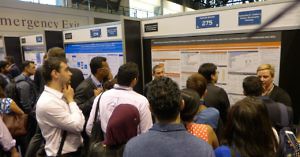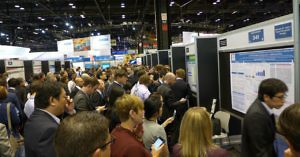Can we use immunotherapy to treat or delay Alzheimers Disease?

Preserved section of the Berlin Wall
I have a personal interest in Alzheimers Disease, my mother Audrey died from it three years ago back in 2014.
Since then, I’ve watched with fascination and excitement the progress made in using the body’s own immune system against cancer. There’s still a long way to go, but a revolution in treating cancer is underway, as we’ve been documenting on this blog and the Novel Targets Podcast.
In recent years in the United States we’ve also seen grand initiatives targeting cancer such as Vice President Biden’s Moonshot, as well as large philanthropic support e.g. the creation of the Parker Institute for Cancer Immunotherapy.
Sadly, we’ve not seen the same level of interest in targeting dementia or funding research into new treatments for Alzheimers disease.
In the United States, the media doesn’t talk much about Alzheimers (compared to cancer), unlike for example, in the United Kingdom where any promising data is heralded with headlines that frequently deliver “hype over hope.”
Alzheimers is an insidious disease that removes the ability of the person to advocate and care for themselves, instead placing the burden on families and caregivers, often for extended periods of time. Ultimately many people end up in supported living or nursing homes.
As we debate healthcare insurance in the United States, who is going to pay for the cost of dementia care as the population grows older? Caring for dementia is arguably the greatest public health challenge that the western world faces.
Which is why I was excited to talk with a researcher who is thinking outside of the box and leading the way in how we could use our immune system against Alzheimers.
Subscribers can login or you can purchase access to BSB Premium Content.
This content is restricted to subscribers




 With this in mind, the annual meeting of the
With this in mind, the annual meeting of the 
 It’s also not something that we have covered extensively here on BSB, so looking at something in a different light is often a good idea since insights and intelligence can sometimes jump out afresh.
It’s also not something that we have covered extensively here on BSB, so looking at something in a different light is often a good idea since insights and intelligence can sometimes jump out afresh. We’re continuing our coverage of highlights from the inaugural ASCO-SITC Clinical Immuno-Oncology Symposium with a look at
We’re continuing our coverage of highlights from the inaugural ASCO-SITC Clinical Immuno-Oncology Symposium with a look at  There has been much noise about biomarkers, including whether they work or not in this niche, as well as how do we go about selecting patients for therapies and combinations?
There has been much noise about biomarkers, including whether they work or not in this niche, as well as how do we go about selecting patients for therapies and combinations?